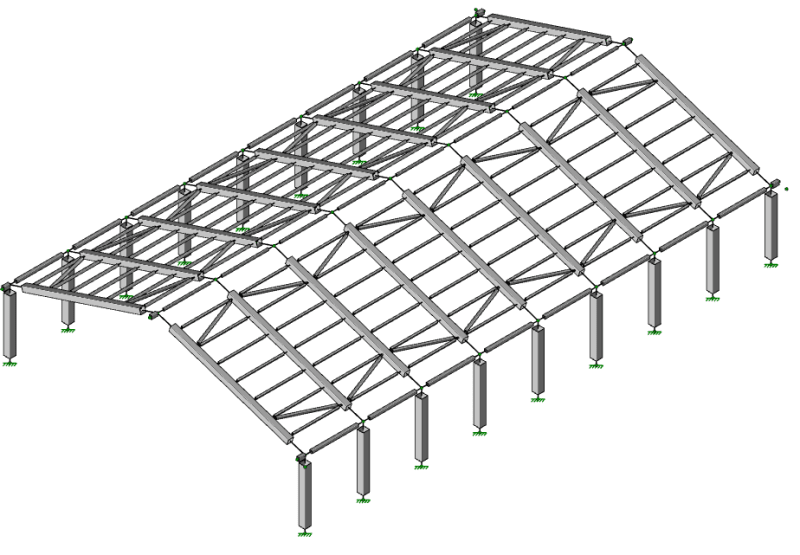erictlee
Structural
- Jul 17, 2013
- 10
In the context of seismic design regulations, ASCE 7 allows for an exception in certain cases regarding the design of Steel Ordinary Cantilevered Column Systems. Specifically, in Seismic Design Categories D and E, ASCE 7 permits the use of provisions outlined in 12.2.5.6, typically reserved for Steel Ordinary Moment Frames. This implies that, aside from column detailing, the overall design should align with principles applicable to Ordinary Moment Frames.
Additionally, AISC 341, section B.5 (pages 9.1-10 and 9.1-11), offers guidance on incorporating a horizontal truss diaphragm within the framework of an Ordinary Moment Frame. Now, consider a scenario where a structure, either partially open or fully open, is designed with a pitched roof, featuring beams connected to the column with pinned connections, in a Seismic Design Category E region. Would it be permissible under these circumstances to implement a horizontal truss configuration in an ordinary cantilevered column system where none of the branches attach to the column, but tie the gables beams together in a truss bracing fashion?
The objective here is to alleviate weak axis demand on the gable frames by orienting them in the strong axis direction. While the columns maintain single curvature, it's noteworthy that the introduction of a horizontal truss introduces increased demand, particularly due to the biaxial component from both seismic directions.
Additionally, AISC 341, section B.5 (pages 9.1-10 and 9.1-11), offers guidance on incorporating a horizontal truss diaphragm within the framework of an Ordinary Moment Frame. Now, consider a scenario where a structure, either partially open or fully open, is designed with a pitched roof, featuring beams connected to the column with pinned connections, in a Seismic Design Category E region. Would it be permissible under these circumstances to implement a horizontal truss configuration in an ordinary cantilevered column system where none of the branches attach to the column, but tie the gables beams together in a truss bracing fashion?
The objective here is to alleviate weak axis demand on the gable frames by orienting them in the strong axis direction. While the columns maintain single curvature, it's noteworthy that the introduction of a horizontal truss introduces increased demand, particularly due to the biaxial component from both seismic directions.


